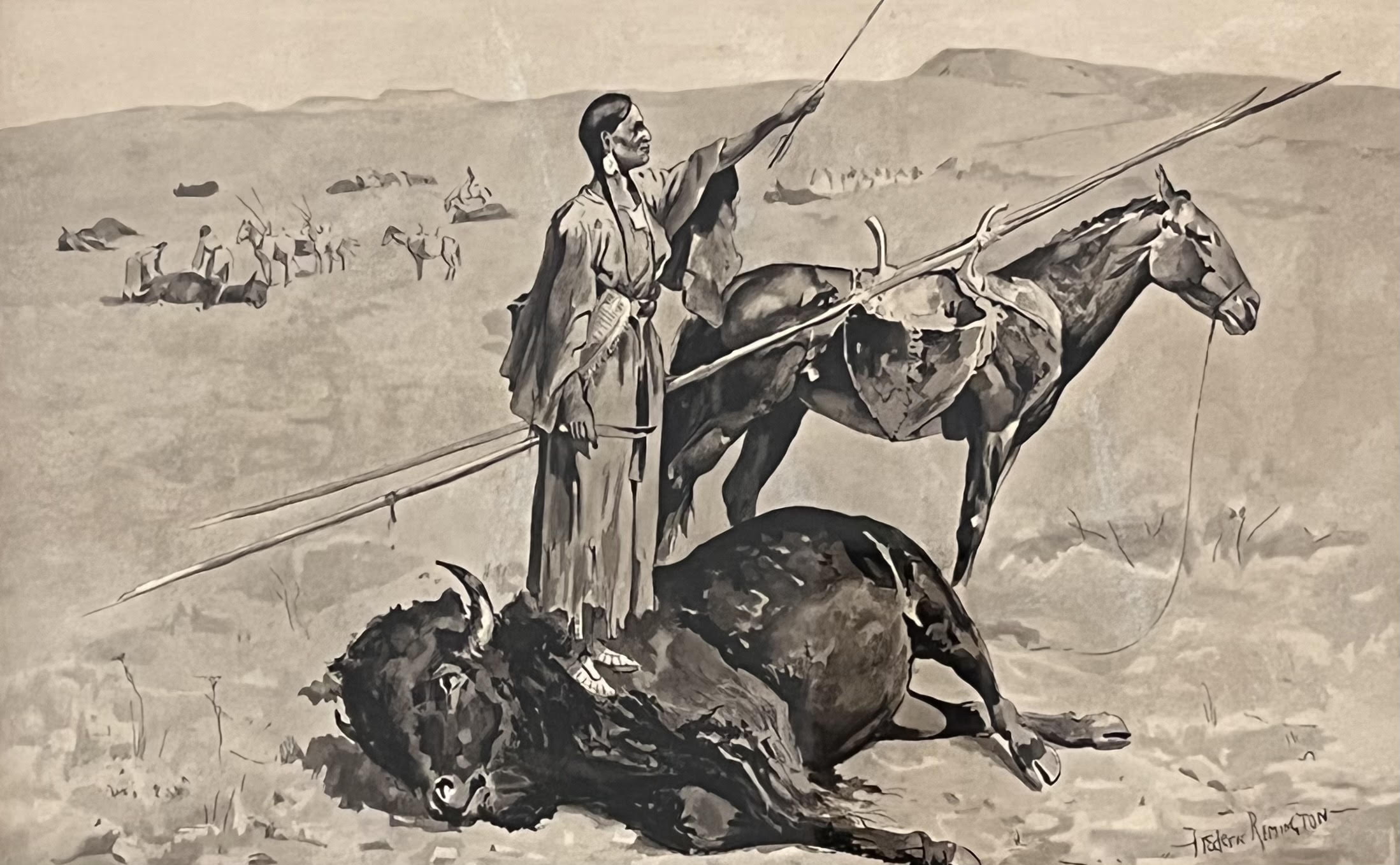Frederic Remington’s art so completely dominated the popular imagination concerning the West in his lifetime that historians are still coming to grips with its legacy.
Born and raised in Canton, New York, Remington enrolled in the Yale Art School before traveling west in 1881 in order to work on a ranch. Two years later he purchased land in Kansas and attempted life as a sheep rancher, but eventually was drawn more and more toward a career as an artist. Remington knew that there was a growing national awareness of the West as a uniquely American region and of the mounted horseman as its symbol. Moving to New York, he went to work for Harper and Brothers and became their most popular illustrator in a very short period of time. He embarked on a regular series of assignments that took him back to his beloved West, where he sketched and gathered material that would find its way into his voluminous writings, illustrations and paintings of life on the frontier.
Many of his earliest sketches and paintings depicted Apache conflicts and their great chief, Geronimo. These tightly rendered and dramatic depictions are accentuated by the brilliant and dusty colors reminiscent of the desert. Remington’s later style involved an increasing looseness in his brushwork; painted in short, occasionally broad strokes, one senses the dash and flair that Remington was able to transmit a story, elevating it to the status of art. “It is hardly possible to convey in words an accurate idea of the panic and terror spread throughout the country by Apaches on the warpath,” Remington wrote in an unpublished manuscript. “I have been in towns when yellow fever and cholera were first announced and have seen the panic-stricken flight of the people; but have never seen anything so terrify and paralyze people as the near approach of these bloodthirsty outlaws.”
ReSources include: The American West: Legendary Artists of the Frontier, Dr. Rick Stewart, Hawthorne Publishing Company, 1986










